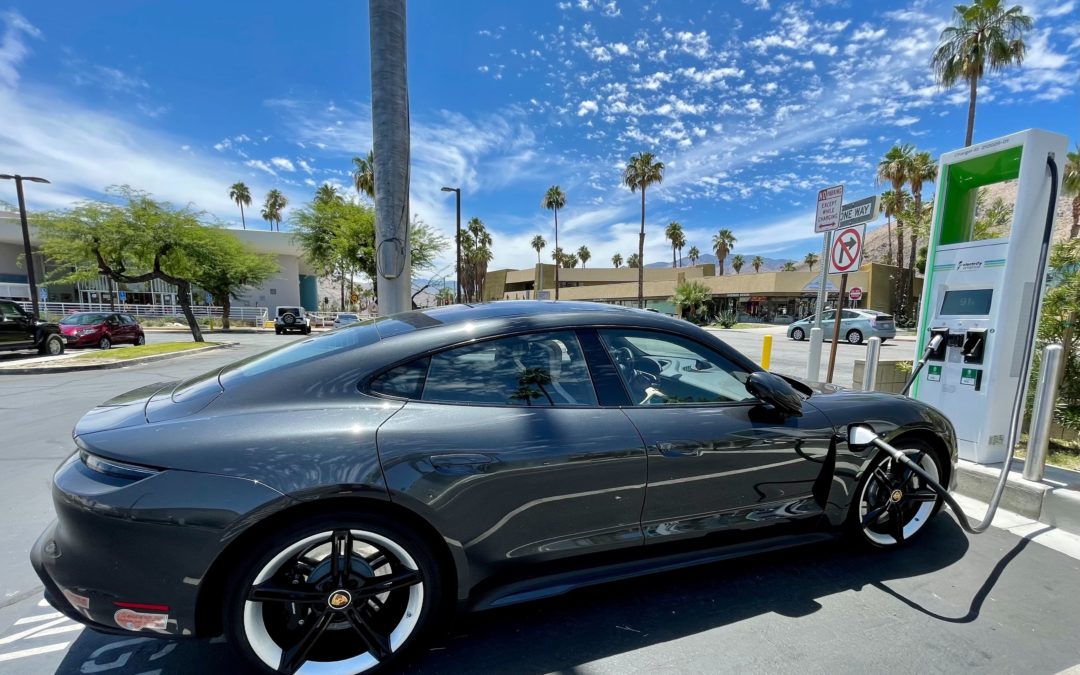Since signing the COP26 Declaration a year ago, California has further strengthened its policies to end the sale of new conventional combustion engine passenger cars, light trucks, and SUVs in the state by 2035. On August 25, 2022, the California Air Resources Board (CARB) approved Advanced Clean Cars II, a rule that sets both new sales requirements for model years 2026 to 2035 and stringent exhaust and emission standards that will rapidly reduce tailpipe pollution and heat-trapping emissions.
The new rule strengthens Governor Newsom’s 2020 executive order, which requires that all new car and passenger truck sales be zero-emission vehicles (ZEVs)—defined in California as battery electric, hydrogen fuel cell electric, and plug-in hybrid electric—by 2035. Under the new regulation, 35% of the vehicles covered need to be ZEVs starting with model year 2026, and that rises to 68% in 2030. As a result, tailpipe emissions could be cut in half through 2040.
California’s new rule is a big deal. Transportation is currently the single largest source of greenhouse gas emissions (GHG) in California and is responsible for approximately 40% of the state’s emissions. The 395 million metric tons of tailpipe GHG emissions that it is estimated ACC II will eliminate from 2026 to 2040 is equivalent to the emissions from powering 77 million American homes over the same period.
Beyond the climate benefits, the new regulation is estimated to save $13 billion in avoided health costs through 2040. The state is already suffering from the worst air quality problems in the nation, resulting in premature deaths and increased hospitalizations.
California’s new rule will help accelerate the U.S. market
Thanks to strong policy support, California is the largest ZEV market in the United States and was home to 42% of U.S. ZEV sales through the first three quarters of 2022. ZEVs accounted for almost 18% of new car sales in California, and battery electric vehicles dominate, rising from a 9.5% share of the whole market in 2021 to almost 15% in the first three quarters of 2022.
California invests heavily in both ZEV sales and charging infrastructure. In January 2022, the state announced a $10 billion Zero Emission Vehicle Package that includes almost $1.2 billion for low-income consumer purchases and expanding charging infrastructure to low-income neighborhoods. Californians can claim up to $7,000 to buy a zero-emission car.
Other states may now follow in California’s path, as U.S. regulations require that California go first. Indeed, one month after ACC II, New York become the first state to follow when Governor Hochul announced a ZEV sales mandate for 2035. New York is also among the U.S. states that signed the COP26 Declaration.
Automakers ramp up commitments
Many automakers are increasing electric vehicle investments in response to growing momentum in the United States. In March 2022, Ford announced plans to spend $50 billion on electric vehicles and batteries until 2026, up from the $30 billion announced earlier. Volkswagen will invest $7.1 billion in manufacturing electric cars in North America and is aiming to make battery electric vehicles 55% of its U.S. sales by 2030.
Automakers representing one-third of California’s auto market have already committed to greater than 50% ZEV sales targets by 2030. Tesla plans to reach 20 million in global sales of battery electric vehicles annually by 2030, up from almost 1 million in 2021. General Motors has committed to selling only electric vehicles globally by 2035, and increasing its North American production capacity to 1 million units by 2025. These announcements signal “the future of cars is electric” in America.

